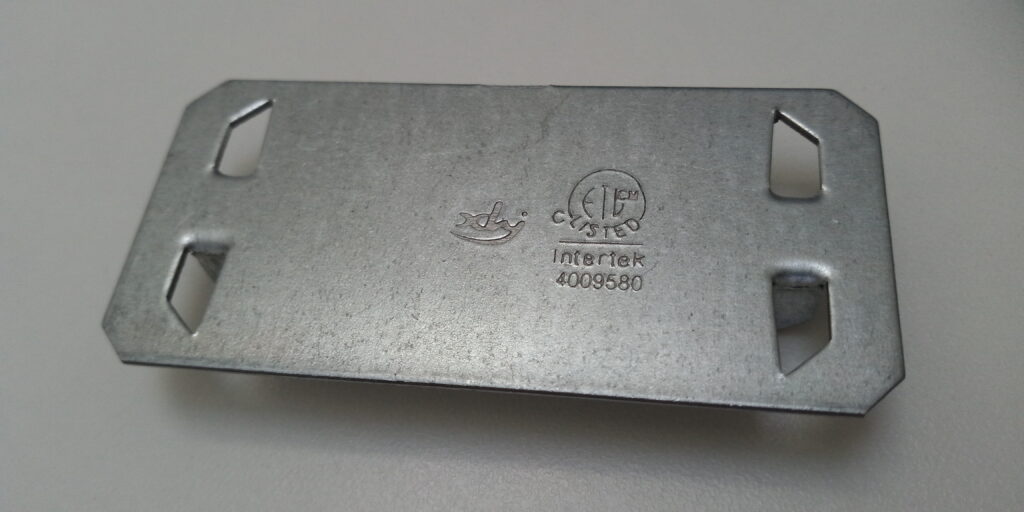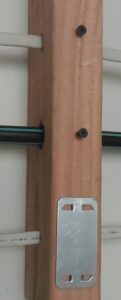This Building Material section of the Building A Home In New Zealand discussion pertains to Thermal and Noise Wall Insulation. This, and the other Building Material sections on Windows, Solar Heating and Electrical, Attic Venting And Internal Moisture Control, Solar Heating and Electircal, and Heating should be read in conjunction with Choosing a Builder or Designing a House.
Thermal Insulation
Insulating walls and ceilings is already practiced in NZ, though it’s benefits here are still underutilized. The minimum required levels of insulation in NZ are far below the rest of the world for similar climates. Unfortunately, most Kiwis believe that our insulation standards are good. They are certainly better than the lack of insulation standards a few short decades ago. Only in 1978 did New Zealand institute any minimum insulation standards. However, NZ standards still aren’t adequate compared to the minimum requirements of other countries with similar climates. Below is a table of required R-Values for England (excluding Scotland which is colder and has even higher requirements), the US, and NZ. Note – the US and NZ have different zones that require different minimum levels of insulation. The southern tip of NZ would be similar to Zone 4 or 5 (out of 8) in the US, while the very north of NZ would be equivalent to Zone 2 or 3 in the US.
| UK1 | US Zone 2 (mild)2 | US Zone 5 (cool)2 | NZ Zone 1-23 | NZ Zone 33 | |
| Wall | 5.6 | 2.6 | 3.7 | 1.9 | 2.0 |
| Roof | 7.7 | 10.6 | 10.6 | 2.9 | 3.3 |
| Floor | 7.7 | 3.3 | 5.3 | 1.3 | 1.3 |
| Window | .71 | .44 | .59 | .26 | .26 |
1 L1A Building Regulations 2010 with 2016 amendments
3 MBIE House Regulations Requirements
One thing to consider though is that there are many additional types of insulation that are available outside of NZ that aren’t common in NZ. The more common include fiber blankets and rolls (batts), foam boards or rigid foam, and loose fill; the less common include insulating concrete blocks, reflective systems, rigid fibrous insulation, sprayed in-place foam, and Structural Insulated Panels (SIPs). Additional information on all of these can be found here. These different types of insulation may provide other advantages that are superior to traditional rolls/bats like more uniform insulation, better seals against air and moisture, and even structural support. Because of their rarity, some of the newer types of insulation may be half as expensive to import as to purchase locally.
One additional type of insulation to consider is improved floor insulation. Upgrading insulation to a raised foundation is relatively simple by adding under floor insulation. Depending on your location and soil type, a slab may be the best choice for your foundation. There are more insulating options for your foundation than laying straight reinforced concrete. Though there are some slabs that partially utilize polystyrene or other ‘pods’ to create channels and pockets of insulation, the R-Values increase but are not significantly higher. Even using a full thermal break slab (don’t forget the outside edges), you are expecting to get an R-Value around 4. Keep in mind that this is a great R-Value by current NZ standards. If you want more, this may be when to borrow a page out of the UK book which has much higher R-Value requirements than NZ. With highly insulating floors, it is also common to combine the slab with in-floor heating. Most often, there is significant insulation either below or on top of the slab to get the desired R-Value. However, technology is changing, and a quick web search of UK Floor Insulation may keep you the most up to date.
In some cases, improving the thermal insulation will require wall cavities that are thicker than we typically use in NZ. An R-5 batt insulation just will not fit in a standard 100 x 50 wall cavity. In addition, the single 100mm deep stud wall also provides a thermal conduit for heat to transfer directly through the wall. To get added wall thickness, it is often much more cost effective to build a different type of wall instead of using 150 x 50 or 200 x 50 studs. Consider either a staggered stud wall or a double stud wall. A staggered stud wall will have a 150 x 50 bottom plate, top plate, and end stud. In between would be 100 x 50 studs on the exterior and 75 x 50 studs on the inside wall. This will provide 150 mm deep cavity with a thermal break between the inner and outer walls. A double wall will have two separately framed walls back to back but not touching. This would give >200 mm deep cavities with a complete thermal break.
Noise Insulation
Sometimes, there can be nothing worse than a noisy neighbor. Even within your own home, you will want to limit noise transmission between louder areas and quieter living places like bedrooms. There are a number of ways to do this. When building our house in NZ, the recommended way of sound insulating was throwing up another sheet of GIB. Though this does help a little, it is often not enough. Below is a table of different wall options and the sound dampening that each wall provides.
| STC VAlue | 100 x 50 600 OC | Staggered Stud 400 OC | Double Stud 600 OC | 1-Sheet GIB | 2-Sheet GIB + Green Glue | Raised Channel | Sound Clips | |
| Normal Wall | 40 | x | x | |||||
| 2x Gib | 45 | x | x | |||||
| Resilient Channel | 49 | x | x | x | ||||
| Resilient Channel, Clips | 52 | x | x | x | x | |||
| Staggered Stud, 2x GIB | 62 | x | x | |||||
| Channels, Clips, 2x GIB | 67 | x | x | x | x | |||
| Double Stud 2x GIB | 73 | x | x |
There are some things that we need to define and disclose about the information in the Table. The STC value is the Sound Transmission Class (STC) and is a rating on how well a partition reduces sound. The higher number is better. Most of the internal walls for these measurements were using 600 mm on center (OC) walls as they transmit significantly less noise than a 400 mm OC wall. When 2 sheets of GIB are used, they are connected with a special sound dampening glue called Green Glue. A raised channel is a metal channel that separates the GIB from the framing timbers. This separates the structural timber framing from the GIB making the GIB unable to hang heavy items like TVs, shelving, or bookcase anchors. A Sound Clip can be used to attach a raised channel to the framing timber and provides better sound isolation. All walls had R 2.2 insulation within the wall to further deaden sound. If thinking of using staggered stud or internal double walls, work with your designer/engineer to verify 75 x 50 framing for both sides of internal walls to help save costs.
Electrical Code vs. Utility vs. Safety
Electrical code in the US and Europe is similar to NZ in most aspects. I will focus on the differences here though as they can have some profound impacts on your home concerning utility and safety.
The US requires at least one outlet on every wall and no point on a wall in entries, hallways, and all habitable rooms to be more than 2m away from an outlet. This means that outlets must be within 4m of each other. The reasoning is that an average cord is 2m long so you should be able to plug something in anywhere along the wall. This isn’t required in NZ where one outlet per room is sufficient. Installing additional outlets is very inexpensive compared to the inconvenience and risk of fire by running extension cords and power strips all over your house to plug into the only outlet per room.
There are also some safety concern differences. One major difference is how wires are protected from penetration due to nails or screws. Wires are run through holes in the studs and nogs within walls. When GIB is applied, screws are used which can penetrate the wires are near the surface. In kitchens or bathrooms, even longer screws are used than for GIB. NZ code requires some protection for all wires within 50 mm of the wall surface. For a wall that is 110 mm thick (90 mm framing + 10 mm GIB + 10 mm GIB), this is likely every wire. Every wire is within the reach of a homeowner using longer screws hanging expensive and heavy items like TVs, artwork, or shelving.
The US prevents screwing through the wires by requiring the installation of a cable protection plate (pictured below), a steel plate that is hammered over a wire, cable, or pipe that physically prevents nails or screws from penetrating. This prevents any wires from becoming damaged (bottom wire) by stopping nails and screws from touching the wires or pipes (top examples below).


NZ takes a different approach centered on minimizing damage instead of preventing it. This is an alternative approach which still minimizes danger from electrocution. NZ requires a Residual Current Device (RCD) for every circuit that has a light switch or power outlet. An RCD interrupts the circuit when the current going out varies from the current coming in by as much as 30 mA to prevent electrocution if there is a fault. RCDs in NZ are required on nearly every circuit in the house except permanently wired devices like hobs, hot water heaters, ovens, etc, which still require alternative protection like cable protection plates or grounded metal conduit. In practice, those permanently wired circuits are simply not protected beyond the simple circuit breaker and violate NZ code. However, electricians self-verify their own work so this isn’t enforced. Once a puncture damages a wire, those wires should be replaced because the insulation has been damaged.
Alternatively, cable protection plates are used in the US to protect plumbing and gas lines as well. When a water line is punctured, the screw or nail may not result in immediate signs of leakage (initial pressure testing) because it blocks the hole. It may take months to rust the nail or screw away leaving a slow leak that may not be immediately visible while water damages framing and floors. Though Cable Protection Plates are used in the US to prevent these accidents, they aren’t required by code in NZ yet, even for protecting gas lines. They would be a very inexpensive addition to the security of a home to prevent damage to utilities run within walls.
Next Steps:
This brings to a close the Wall Insulation and Protection section of our Building A Home In New Zealand. The next section is Solar Heating and Electrical.
